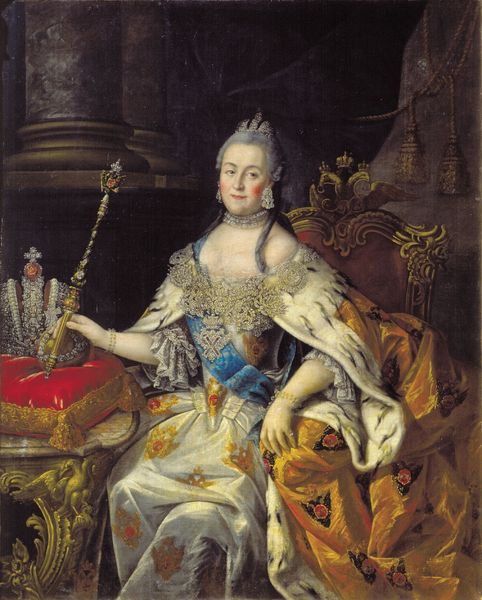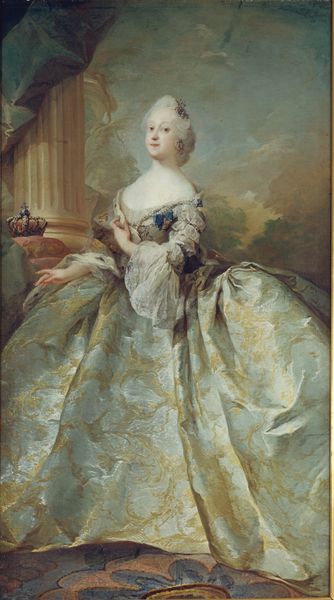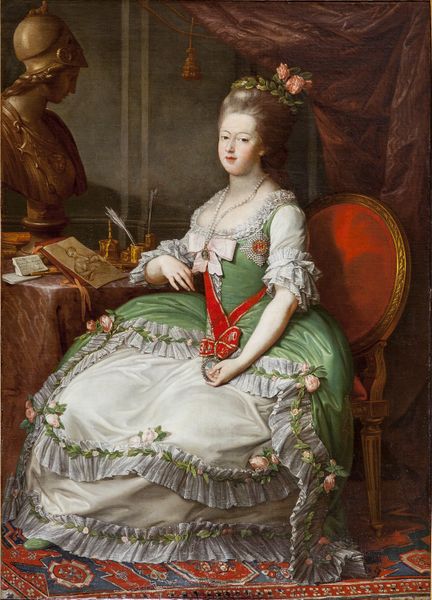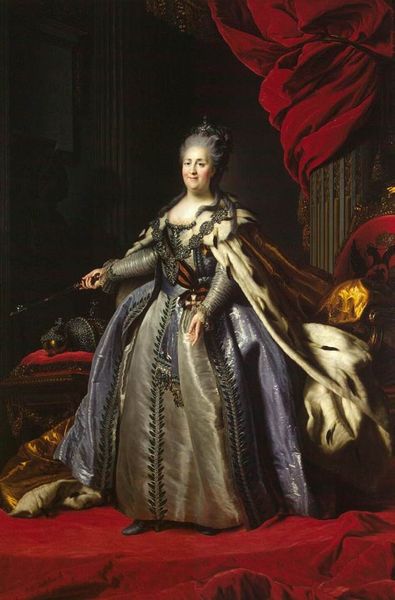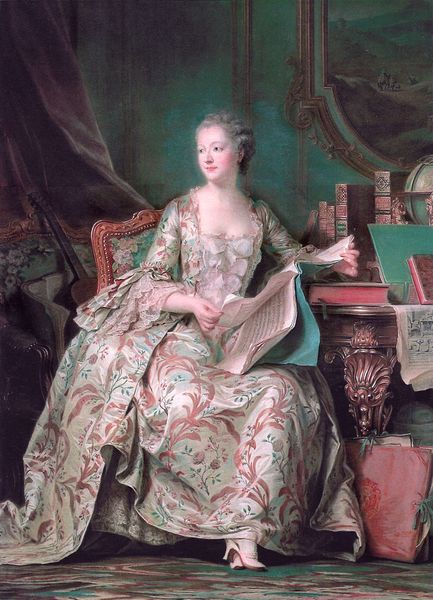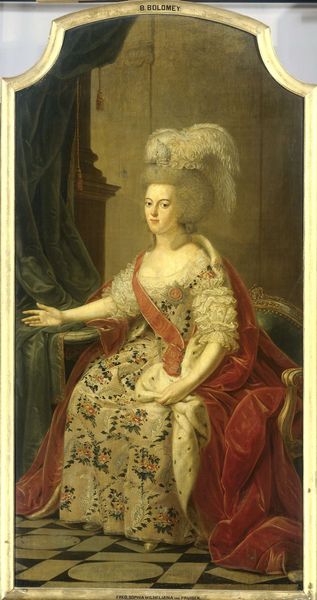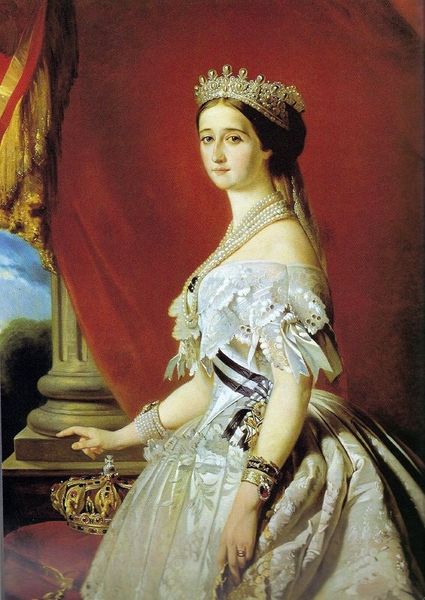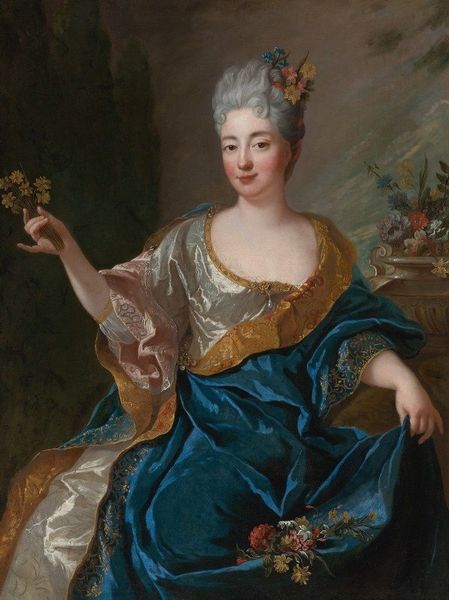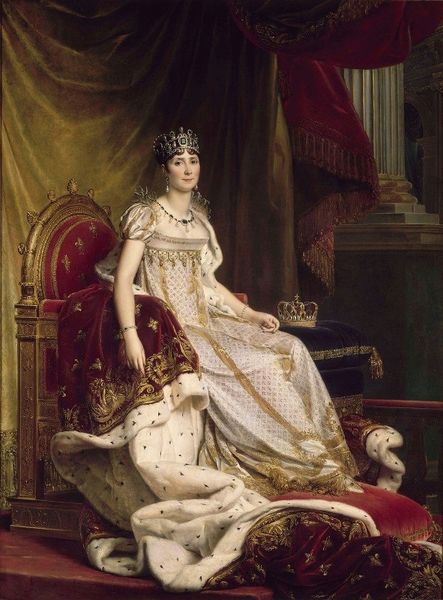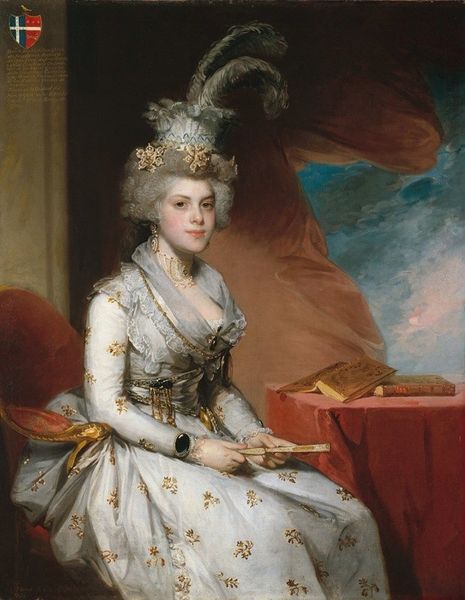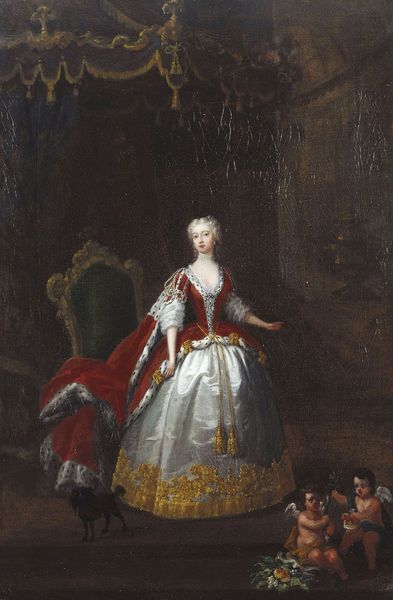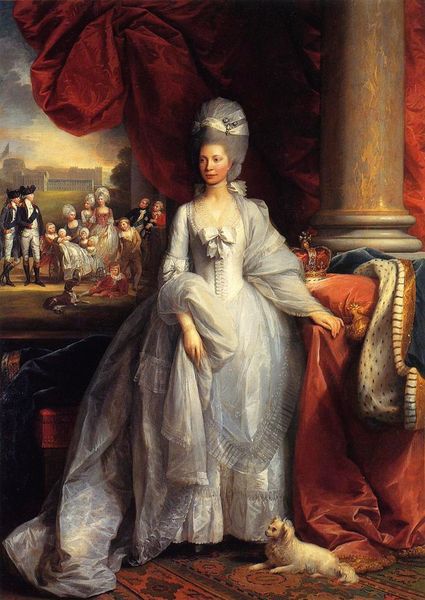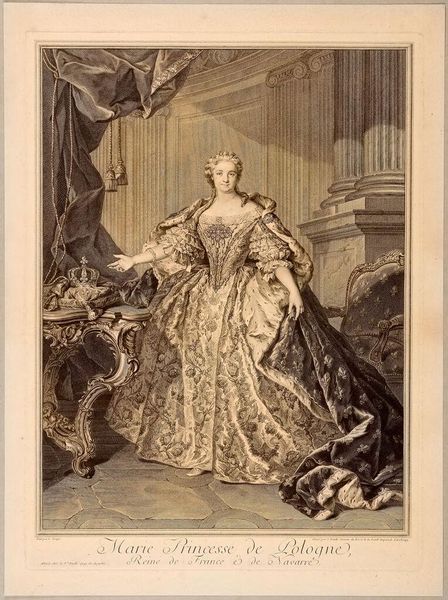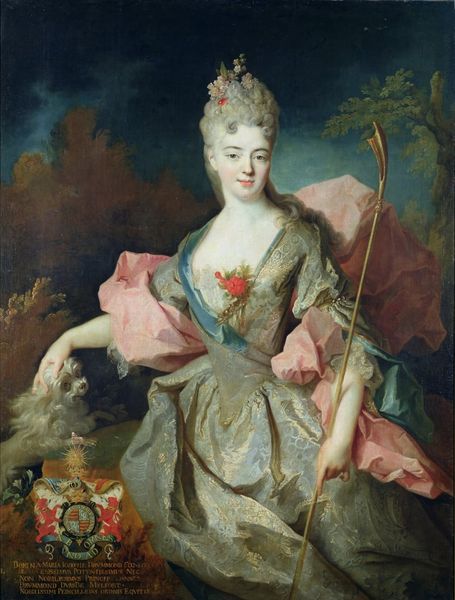
Copyright: Public domain
Editor: So, here we have Aleksey Antropov's "Portrait of Catherine II," painted in 1766, residing here at the Hermitage. It’s, shall we say, a very… assertive portrait? All the trappings of power are definitely on display. What's your read on this, what do you see when you look at it? Curator: Oh, assertive is putting it mildly! This isn’t just a portrait; it’s a declaration. Look at the colours – regal reds and golds vying for attention. And her gaze... I wonder, does it inspire confidence or just plain intimidation? It’s as if Antropov is showing us not just Catherine, but the *idea* of Catherine, fully loaded with imperial symbolism. Almost makes you want to curtsy, doesn't it? Editor: It definitely has that effect! The weight of those symbols – the crown, the scepter – it’s all quite literal, isn't it? But is there more than meets the eye? Curator: Absolutely! Think about the era. This is the Enlightenment crashing against the rocks of absolute monarchy. Antropov’s painting exists in that fascinating tension. Is it pure propaganda, or is there a hint of something else, maybe a question about the nature of power itself hidden beneath all that finery? What do you think? Editor: It’s interesting that you point that out! Perhaps it’s more than just surface-level flaunting of status, then, and actually leaves some space for viewers to make up their minds about how they feel. Curator: Exactly! The genius often lies not in what’s shown, but in the questions it inspires, doesn’t it? A bit like a philosophical riddle wrapped in silk and ermine! Editor: I love that description. It certainly gives me a new appreciation for what might be lurking beneath the surface. Thanks! Curator: My pleasure! And remember, sometimes the loudest images are the ones whispering the most intriguing secrets.
Comments
No comments
Be the first to comment and join the conversation on the ultimate creative platform.
